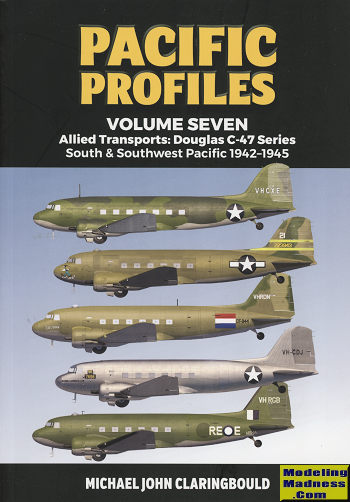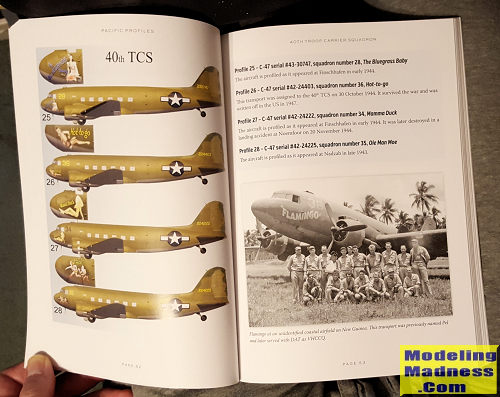 One of the reasons the US did so well in WWII is not because of superior
equipment, but because of logistics. It was able to keep troops suppied. It was
able to provide spare parts to fix equipment that needed repair. It was also
able to bring in needed troops in a fairly timely manner. This was possible not
only due to a fairly large fleet of transport ships, but due to having one of
the best cargo aircraft of the war and having it in the numbers that were
needed.
One of the reasons the US did so well in WWII is not because of superior
equipment, but because of logistics. It was able to keep troops suppied. It was
able to provide spare parts to fix equipment that needed repair. It was also
able to bring in needed troops in a fairly timely manner. This was possible not
only due to a fairly large fleet of transport ships, but due to having one of
the best cargo aircraft of the war and having it in the numbers that were
needed.
Of cource, I'm talking about the C-47 and derivatives.
Not only was the type a huge success in the civil aviation market (many aviation
historians point at the plane as being what got US airlines into profitability),
but it was widely used in its military cargo version as well. The type was
suppied in varioius numbers to all Allied countries and continued to serve well
after the war was over.
As with anything American transport units had to be
formed, crews trained and then transferred into theater. Initially, the
SWPA/SOPA was able to rely on both USAAF and USMC cargo units that were already
extant and in some cases (the Philippine based units) already in theater. Others
crews came from Australian and Dutch civil airlines and a number of early US
crews were also highly experienced airline crews. Operations in the Solomons and
New Guinea were hazardous at best with the threat of enemy fighters, quickly
developing inclement weather and the distances often involved. Maintenance in
theater was also fairly basic, though ground crews did a superlative job
 maintaining
and repairing planes. Eventually a fairly large number of transport groups were
formed with many moving north after the Japanese were removed from New Guinea.
The book also covers Australian, Dutch, and New Zealand units.
maintaining
and repairing planes. Eventually a fairly large number of transport groups were
formed with many moving north after the Japanese were removed from New Guinea.
The book also covers Australian, Dutch, and New Zealand units.
Each of these
units
are covered in greater or lesser detail, depending on how long they operated in
theater. Each section
shows the squadron's common markings and colors (such as they were) along with a number of great
photos and profiles based on those photos as you can see by the example provided
on the left. Each full color profile provides
information on that particular aircraft. No lengthy pilot stories or background
history on this as it concentrates on the aircraft and units involved in the
conflict. In addition to photos and profiles, you are provided an introductory
section on the plane and the theater of operations as well as some nice art
work, the latter spread throughout the book.
It all makes for a superb reference book for the modeler
and enthusiast and well worth the price of admission. I very much like this series and look forward to each new
volume. Most highly recommended.
August 2022
Copyright ModelingMadness.com. All rights reserved. No
reproduction in part or in whole without express permission.
Review book courtesy of
Casemate Publishers. You can get your
copy from
this link.
If you would like your product reviewed fairly and quickly, please
contact the editor or see other details in the
Note to
Contributors.
 One of the reasons the US did so well in WWII is not because of superior
equipment, but because of logistics. It was able to keep troops suppied. It was
able to provide spare parts to fix equipment that needed repair. It was also
able to bring in needed troops in a fairly timely manner. This was possible not
only due to a fairly large fleet of transport ships, but due to having one of
the best cargo aircraft of the war and having it in the numbers that were
needed.
One of the reasons the US did so well in WWII is not because of superior
equipment, but because of logistics. It was able to keep troops suppied. It was
able to provide spare parts to fix equipment that needed repair. It was also
able to bring in needed troops in a fairly timely manner. This was possible not
only due to a fairly large fleet of transport ships, but due to having one of
the best cargo aircraft of the war and having it in the numbers that were
needed.  maintaining
and repairing planes. Eventually a fairly large number of transport groups were
formed with many moving north after the Japanese were removed from New Guinea.
The book also covers Australian, Dutch, and New Zealand units.
maintaining
and repairing planes. Eventually a fairly large number of transport groups were
formed with many moving north after the Japanese were removed from New Guinea.
The book also covers Australian, Dutch, and New Zealand units.